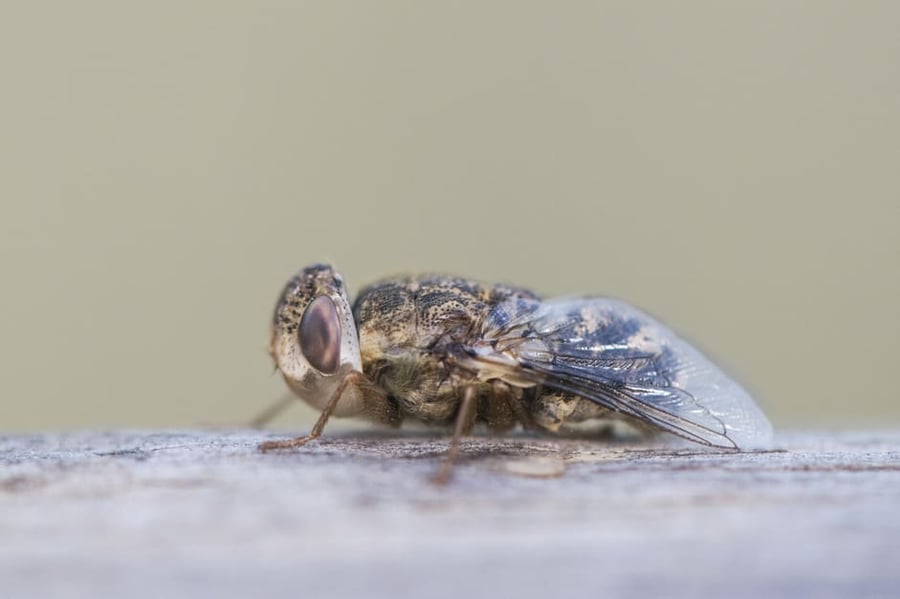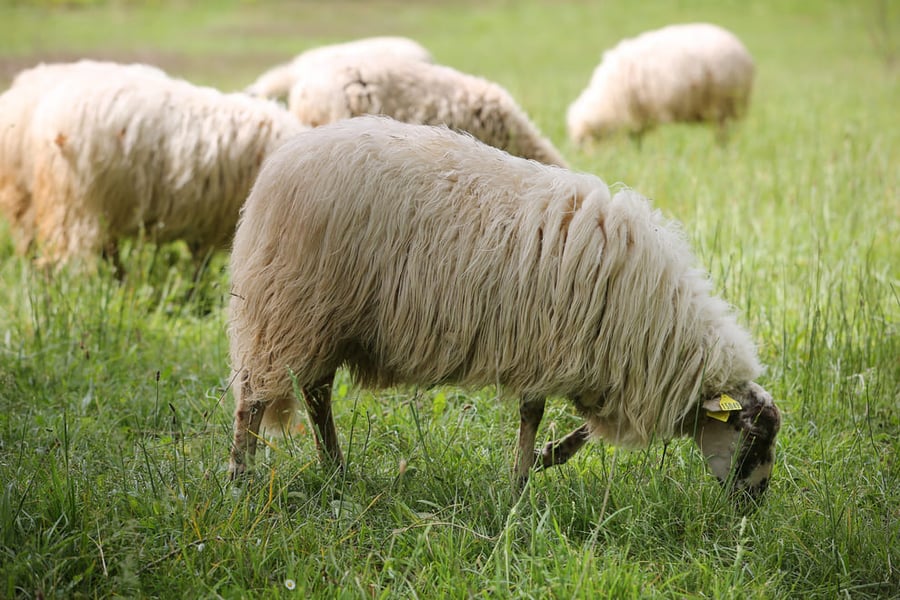Oestrosis is a frequent cavitary myiasis of sheep and goats caused by the larvae of the fly Oestrus ovis. The disease is endemic in many geographical regions of the world, especially in Europe and Africa (Ahaduzzaman, 2019). There are two different phases of the infection even though they may be sometimes mixed: fly strike, and myiasis. The diagnosis is quite easily made upon presence of compatible clinicals signs (nasal discharge, sneezing) collectively displayed at a time when flies are active. Infection by Oestrus ovis can result in economic losses. For instances, the infestation in some sheep can result in weight loss by up to 4.5 kilograms, decreased wool production up to 500 grams, and decreased milk production up to 10% (Ilchman et al., 1987).
Biology
Adult females larviposit first-instar larvae (L1) directly into the nostrils of sheep and goats. Their development from L1 to L3 in the nasal and sinus cavities is responsible for severe clinical signs. The lifetime of adults is thought to be short (from 2 to 4 weeks) as they lack oral mouthparts and are unable to feed (see picture below). During their life span, female flies deposit up to 500 larvae into the nostrils or eyes of their hosts.

In the temperate climate, adult flies are active from March to June and from September to November depending on the area. Under warmer climate, adults are active during the humid season (Gracia et al., 2006). Mating of adult flies and larviposition occur on warm, sunny, and windless days. Although temperature seems to be the main factor determining fly activity, wind also plays an important role. Fly strikes occur at temperatures greater than 20 °C, but mainly between 25 and 28 °C. Few or no strikes are seen under moderate or strong wind but can occur in a wide range of relative humidity.
Larvae stages
- The larva 1 (L1) is spindle-shaped, about 1 mm long and 0.36 mm wide. As soon as the laying has been carried out, L1 penetrate and go to nasal cavities, its structures avoid being expelled by host sneezing and help to move quickly into nasal passages (nasal septum, turbinates, and the ethmoid bone).
- The L1 grow to second instar (L2); it is 3 to 12 mm long and the size of their hooks and spines is reduced, not being therefore able to be expelled sneezing (Angulo-Valadez et al., 2010). The L2 migrates to the frontal sinuses and horn cavities and moult to third instar larvae (L3).
- The L3 is longer than 20 mm and it is provided with large hooks, stout spines and dorsal plates which serve to favor its gradual descend in the nasal cavities to the outside environment. Indeed, when the larvae have attained their maximal growth, they migrate back to the nasal passages and are expelled by the sneezing of the host onto the ground where they pupate.
Importance of climate conditions
The evolution of O. ovis is strongly influenced by climatic conditions. The length of the parasitic portion of the life cycle is quite variable, lasting from 3 to 4 weeks to several months depending on the season and climatic conditions (Zumpt, 1965). When temperature is above 12 °C larval activation begins, showing the highest activity at 25–28ºC (Angulo-Valadez et al., 2010). Under environmentally favorable conditions, larval development inside the host lasts 25–35 days. However, in temperate areas where the winter is too cold for pupariation, or during the hot and dry season of tropical countries, parasites can reduce their metabolism, remaining quiescent in the host in a hypobiotic or diapause stage for up to 9 months (Dorchies et al., 2006). Arrested development (hypobiosis) concerned mainly L1 larvae and is considered as a form of adaptation to local climate. There are no clinical signs during L1 hypobiosis period.

Conclusion
Control of Oestrus ovis infection should be closely adjusted to local climatic conditions. Indeed, it is important to know the parasite biology, especially the occurrence of the parasitic period to be able to prevent the clinical signs and economic losses. Knowledge of the presence of L3 and if O.ovis undergoes hypobiosis can also be useful.
References
Ahaduzzaman, M.,2019. The global and regional prevalence of oestrosis in sheep and goats: a systematic review of articles and meta-analysis. Parasites Vectors 12, 346.
Ilchmann, G., Splisteser, H., Betke, P., 1987. Problems of large scale control of œstrosis in sheep. Med. Vet. Dipterol., 233–234.
Gracia, M.J., Lucientes, J., Peribáñez, M.A., Calvete, C., Ferrer, L.M., Castillo, J.A., 2006. Kinetics of Oestrus ovis infection and activity of adult flies. Parasite. 13, 311–313.
Angulo-Valadez, C.E., Scholl, Ph., Cepeda-Palacios, R., Jacquiet, Ph., Dorchies, Ph., 2010. Nasal bots… a fascinating world!. Vet. Parasitol. 174, 19–25.
Zumpt, F., 1965. Myiasis in Man and Animals in the Old-world. Ed. Butterworth, London, 225 pp.
Dorchies, P., Tabouret, G., Hoste, H., Jacquiet, P., 2006. Oestrinae host-parasite interactions. In: Colwell, D.D., Hall, M.J.R., Scholl, P.J. (Eds.), The Oestrid Flies. CABI Publishing p. 359.
About the author
Damien Achard (Ruminants Global Technical Manager)
Seasoned veterinarian, graduated from Ecole Nationale Vétérinaire de Nantes (France). After three years as a practitioner in central France, he pursued specialization in large animal internal medicine, completing an ACVIM residency and a Master of Sciences at the University of Montréal (2010-2014). Joining Semex Alliance as Health Manager for an IVF unit (2015-2016), he then transitioned to Ceva in 2016 as a Ruminants Global Technical Manager. Dr. Achard is an accomplished researcher, publishing on topics like downer cows, calf pneumonia or cryptosporidiosis and their associated therapies, and rational use of anthelmintics in ruminants. His ResearchGate profile (https://www.researchgate.net/profile/Damien-Achard/research) highlights his significant contributions to the veterinary field.
Explore author’s articles
.webp)

Leave your comments here